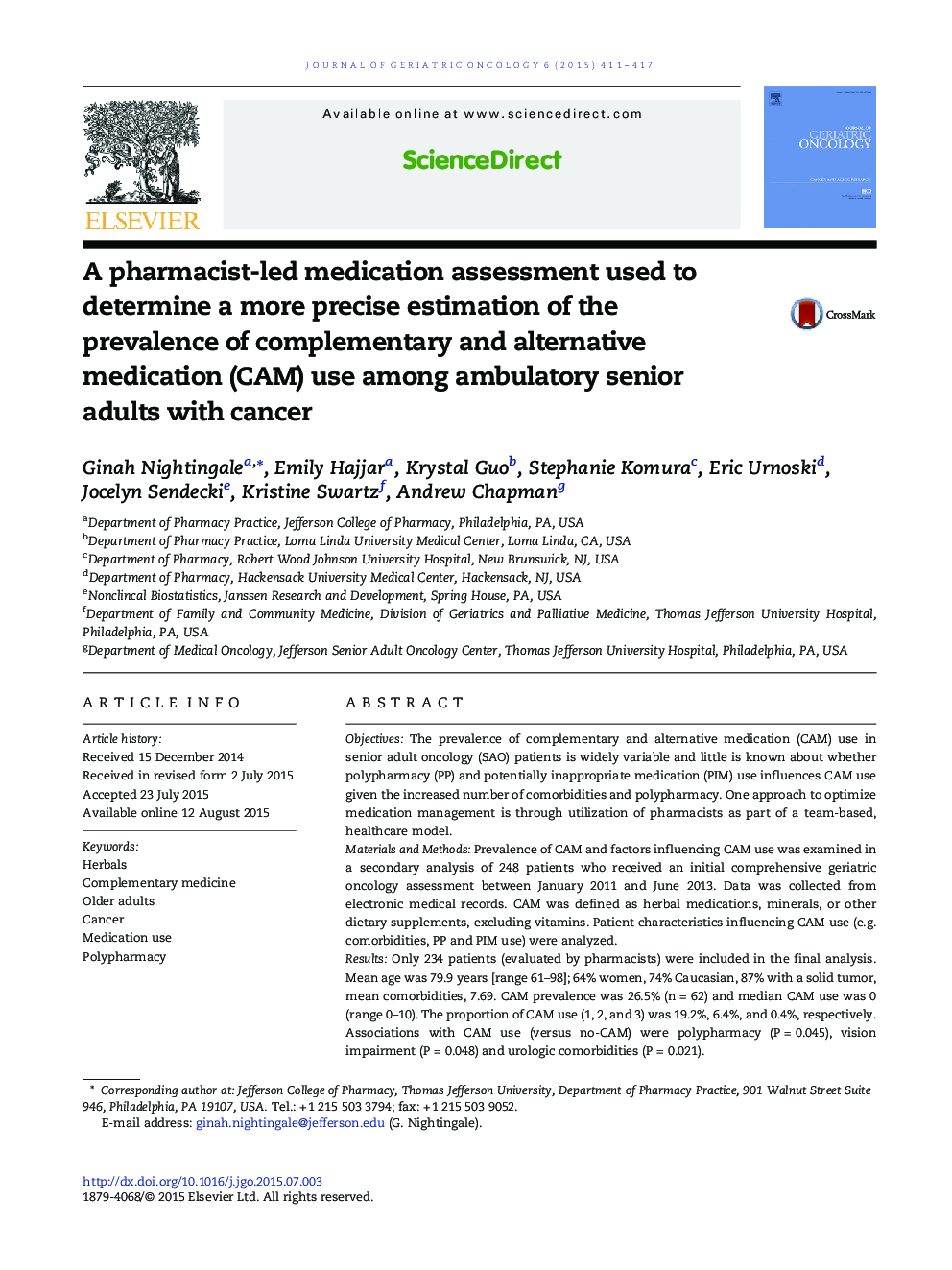| Article ID | Journal | Published Year | Pages | File Type |
|---|---|---|---|---|
| 1912230 | Journal of Geriatric Oncology | 2015 | 7 Pages |
ObjectivesThe prevalence of complementary and alternative medication (CAM) use in senior adult oncology (SAO) patients is widely variable and little is known about whether polypharmacy (PP) and potentially inappropriate medication (PIM) use influences CAM use given the increased number of comorbidities and polypharmacy. One approach to optimize medication management is through utilization of pharmacists as part of a team-based, healthcare model.Materials and MethodsPrevalence of CAM and factors influencing CAM use was examined in a secondary analysis of 248 patients who received an initial comprehensive geriatric oncology assessment between January 2011 and June 2013. Data was collected from electronic medical records. CAM was defined as herbal medications, minerals, or other dietary supplements, excluding vitamins. Patient characteristics influencing CAM use (e.g. comorbidities, PP and PIM use) were analyzed.ResultsOnly 234 patients (evaluated by pharmacists) were included in the final analysis. Mean age was 79.9 years [range 61–98]; 64% women, 74% Caucasian, 87% with a solid tumor, mean comorbidities, 7.69. CAM prevalence was 26.5% (n = 62) and median CAM use was 0 (range 0–10). The proportion of CAM use (1, 2, and 3) was 19.2%, 6.4%, and 0.4%, respectively. Associations with CAM use (versus no-CAM) were polypharmacy (P = 0.045), vision impairment (P = 0.048) and urologic comorbidities (P = 0.021).ConclusionsA pharmacist-led comprehensive medication assessment demonstrated a more precise estimation of CAM prevalence in the ambulatory SAO population. CAM use was associated with polypharmacy, ophthalmic and urologic medical conditions. Integrating pharmacists into team-based (geriatric and oncology) care models is an underutilized yet viable solution to optimize medication use.
